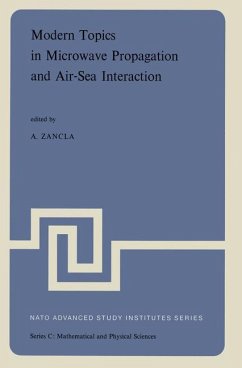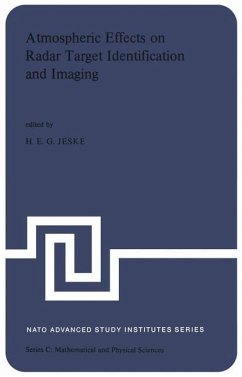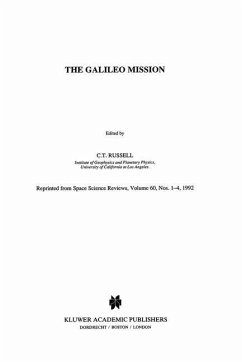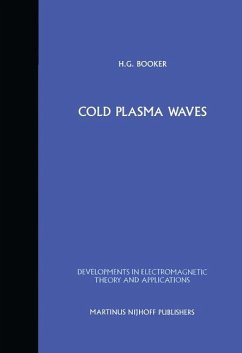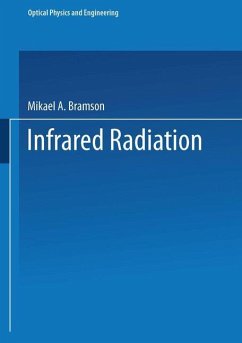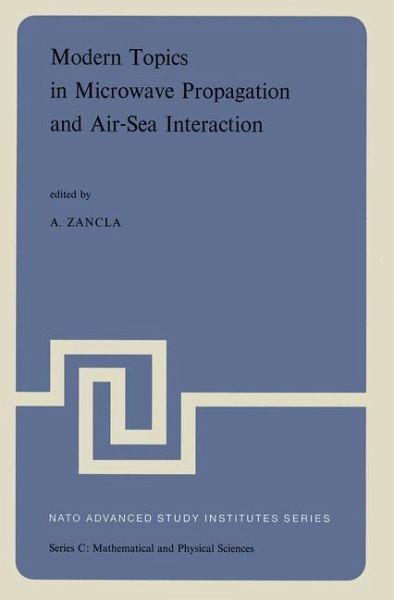
Modern Topics in Microwave Propagation and Air-Sea Interaction
Proceedings of the NATO Advanced Study Institute held at Sorrento, Italy, June 5-14, 1973
Herausgegeben: Zancla, A.

PAYBACK Punkte
77 °P sammeln!
Long-term measurements of field strength have been performed over a 160 km path entirely over sea in the Baltic area. For short periods the radio measurements have been combined with meteorolo gical measurements in order to describe the structure of the re fractive index field. The heigth of layers was continously deter mined by remote sensing techniques and their thickness and inten sity by airborne and balloonborne instruments. From these data, field strengths have been calculated for scatter, reflection and duct propagation. It will be shown that reflection propagation dominates at the low ...
Long-term measurements of field strength have been performed over a 160 km path entirely over sea in the Baltic area. For short periods the radio measurements have been combined with meteorolo gical measurements in order to describe the structure of the re fractive index field. The heigth of layers was continously deter mined by remote sensing techniques and their thickness and inten sity by airborne and balloonborne instruments. From these data, field strengths have been calculated for scatter, reflection and duct propagation. It will be shown that reflection propagation dominates at the low frequency end. Whilst at higher frequencies, very sharp layers are required for reflection propagation. At these frequencies, high signals are generally caused by duct propagation. 1.1 Instruments and plan for the experiments. The radio measurements were performed with the following equipment. 5000 MHz: Transmitted power 500 kW (pulsed). Reflector antennas. Free space field strength over thepath + 15 dBm. 460 MHz: Transmitted power 10 W (CW) 8 element Yagi antennas. Free space field strength over the path - 65 dBm. 170 MHz: Transmitted power 10, W(CW). 8 element Yagi antennas. Free space field strength over the path - 60 dBm. The antenna heights for the transmitters and receivers were 100 m above sea level. The field strengths were recorded on ink recorders and simul taneously sampled, digitized and evaluated on line in a minicom puter. For the meteorological measurements, the following equipment were used: Airborne microwave refractometer and thermistor, flown up to 2000 m.



